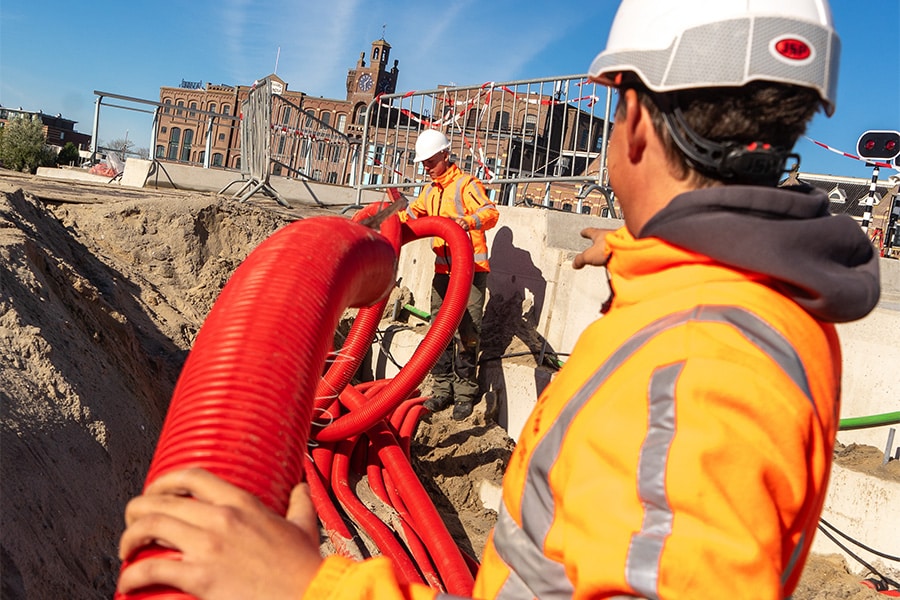
Gigantic construction with minimal tolerances
Millimeter work at high altitude
One of the most important parts of the salt dam are the pillars 27.5 meters high, 8 meters wide and weighing nearly 3,000 tons. The pillar structure is also the most important part for DYWIDAG. They are responsible for the truss construction. It is literally millimeter work at great heights.
"The biggest challenge in this project is that it involves gigantic forces, a huge structure with minuscule tolerances," said Robert Jansen, business unit manager at DYWIDAG. "The piers are prefabricated on site, lifted to the final location and then set in place. And especially the lifting point is what we are concerned with. The basic principle is that this point must not become detached from the underlying concrete structure during lifting. This means that the lifting point must be pressed against the structure in advance. To overcome these forces, we have devised a gigantic construction to use high-quality rods to clamp the lifting point to the concrete structure. If you didn't do this, the point would come loose from the concrete and you don't want that. That's why we bring the forces into the construction in advance in this way. That is also our specialty."

Precision work
This prestressing is done with bars of a high-quality steel grade (prestressing steel). The prestressing force pressing the lifting point against the structure must then be higher than the tensile force resulting from the lifting/raising of the pillar. DYWIDAG was called in at the time a basic design was already in place. "However, it was so large that it did not fit within the configuration. Together with the team from Van Hattum and Blankevoort, we started looking for alternatives. What does fit? After much calculation and puzzle work involving the necessary mock-ups, we arrived at a total of 44 rods of 57 millimeters in diameter per pillar, 11 per corner point. Extreme customization is something we often do, but never on this scale. Our bars normally go up to 40 millimeters in diameter, but here we go up to 57 millimeters in diameter. It's bigger and coarser, while the dimensions have to be more precise. After all, there will be one lifting frame over which 22 rods have to be in exactly the right position at the same time."
Centimeter clearance
The rods will be anchored in the concrete. To have sufficient "body," the bars are built in over a length of about 10 meters. "As a result, they are in multiple pour phases and therefore have to be coupled. The moment we arrive at the highest point of the structure, then the lifting point is placed over it. This must be accurate to the millimeter. In fact, at the top at over 27.5 meters, we only have 1 centimeter of clearance. That makes the sizing and fitting even more complex. You can imagine that this requires the necessary coordination with each other to be able to build it together in that environment."



